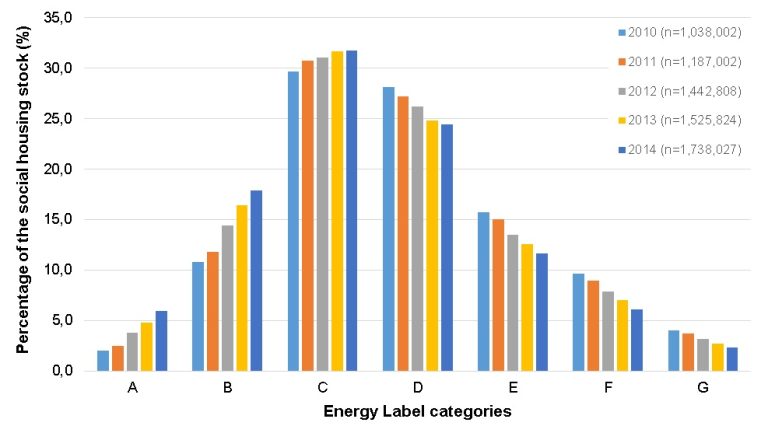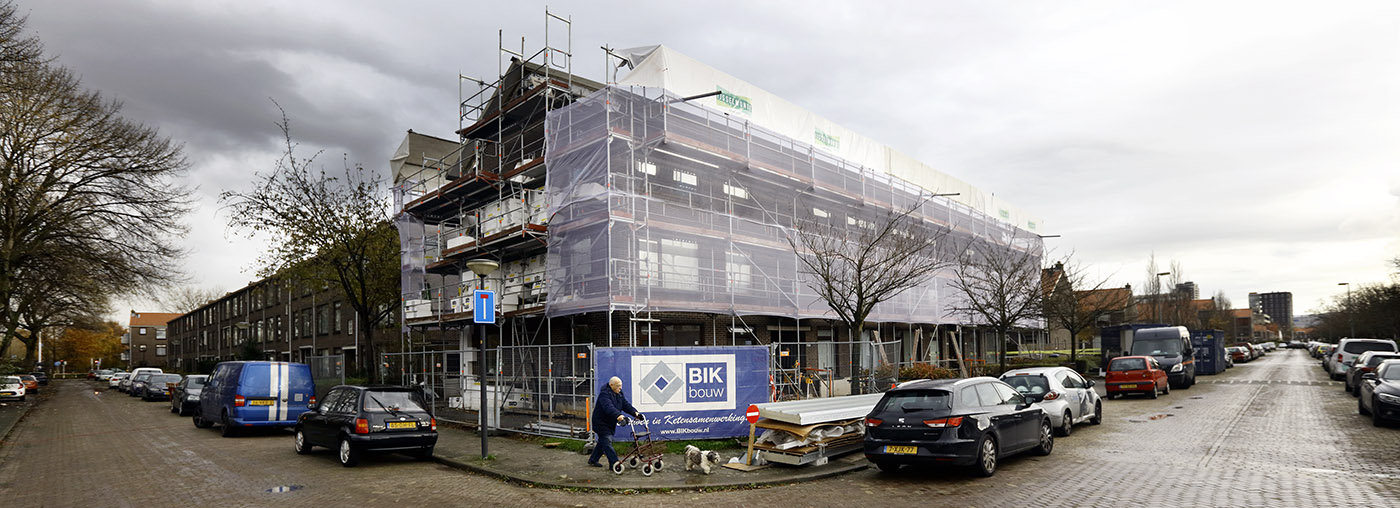On average, the Dutch non-profit housing stock will have a B energy label by 2021, promises the 2008 Energy Covenant. Instead, a C label is more likely, warns Dr Faidra Filippidou of the TU Delft Faculty of Architecture and Built Environment, OTB.
Aiming to save 33% of heating energy in rented housing, the Minister for Housing, the non-profit housing corporation Aedes and other parties signed the Energy Covenant in 2008. The Covenant stated that the average energy label for the 2.4 million houses owned by non-profit corporations would be raised to a B level by 2020. Energy renovations would raise the energy label (on a scale from G to A) by two steps, said the press release.
Ten years later, in her PhD thesis Dr Faidra Filippidou concludes that ‘the progress in the energy performance of the housing stock is rather modest’. She bases her conclusion on her study of the SHAERE database, the official tool for monitoring progress in the field of energy saving measures for the non-profit housing sector. SHAERE lists the official energy labels from 2010 to 2014, and thus it tracks the progress in energy renovations.
She also used data for the actual gas consumption of a part of the non-profit housing stock. These data enabled her to match the energy renovation measures with the actual energy savings for 819 thousand dwellings.
This study revealed that:
- the renovation rate is too low (about 1% of the stock per year);
- energy renovations are often less effective than assumed;
- the actual energy savings are much lower than predicted.
If anything, the urgency to reduce the consumption of energy for heating has only increased over the last 10 years. Not only does the Paris Climate Agreement limit the use of fossil fuels, but the production from the Groningen gas fields will also be reduced. With a 39% share in total energy consumption worldwide, buildings are a good place to start saving energy. In Europe, the Energy Performance of Buildings Directive (EPBD) is the driving force behind national measures.


The Covenant decreed that energy renovations should raise the energy labels by two steps. A plot of energy labels over the years 2010-2014 shows that the occurrence of the worst labels, G to D, has decreased, and the frequency of labels A to C has increased. But the rate of change is slow and the measures taken often fall short of the two step rise. The reason is the haphazard nature of many energy renovation projects. For example, while heating systems and double glazing often are replaced, roof, wall and floor insulation are less frequently replaced. This patchwork of measures is usually insufficient to raise the energy label by two steps.


Energy renovations are less effective than predicted. For example, the energy saving is over-estimated by 52% for a two step increase in energy label. Part of the reason is that people in badly insulated houses have adapted their behaviour. In winter they now only heat the living room for example. Because the consumption was less than expected before the renovation (wrong starting point), the energy saving due to the renovation is less than predicted from physical models.


At the current rate, the Covenant’s targets will not be met. The mean energy index for non-profit housing, as read from the SHAERE database, will reach 1.4 by 2020, which corresponds to an energy label C.
On the other hand, it could be argued that the non-profit building sector has at least made some progress in energy saving. Its energy renovation activity, slow and haphazard as it may be, is a shining example for privately owned housing (56% of the housing stock) and private rental housing (13%), where energy saving renovations are next to nothing and there are no policies to enforce such measures. People would rather invest in a new kitchen or bathroom than in largely invisible energy saving measures.
Dr Filippidou will be monitoring energy efficiency issues as a researcher at the Joint Research Centre in Petten for the European Commission. Her first proposition is that ‘moderation of energy demand is the only way to ensure a clean energy future’. It underlines that human behaviour may have a significant impact on energy saving, together with than building physics and energy labels.
- Faidra Filippidou, Energy performance progress of the Dutch non-profit housing stock: a longitudinal assessment, PhD supervisors Professor Henk Visscher and Dr Nico Nieboer (BK), 20 June 2018.
- Download thesis here
Read more about how to make old houses energy neutral here.
Do you have a question or comment about this article?
j.w.wassink@tudelft.nl


Comments are closed.